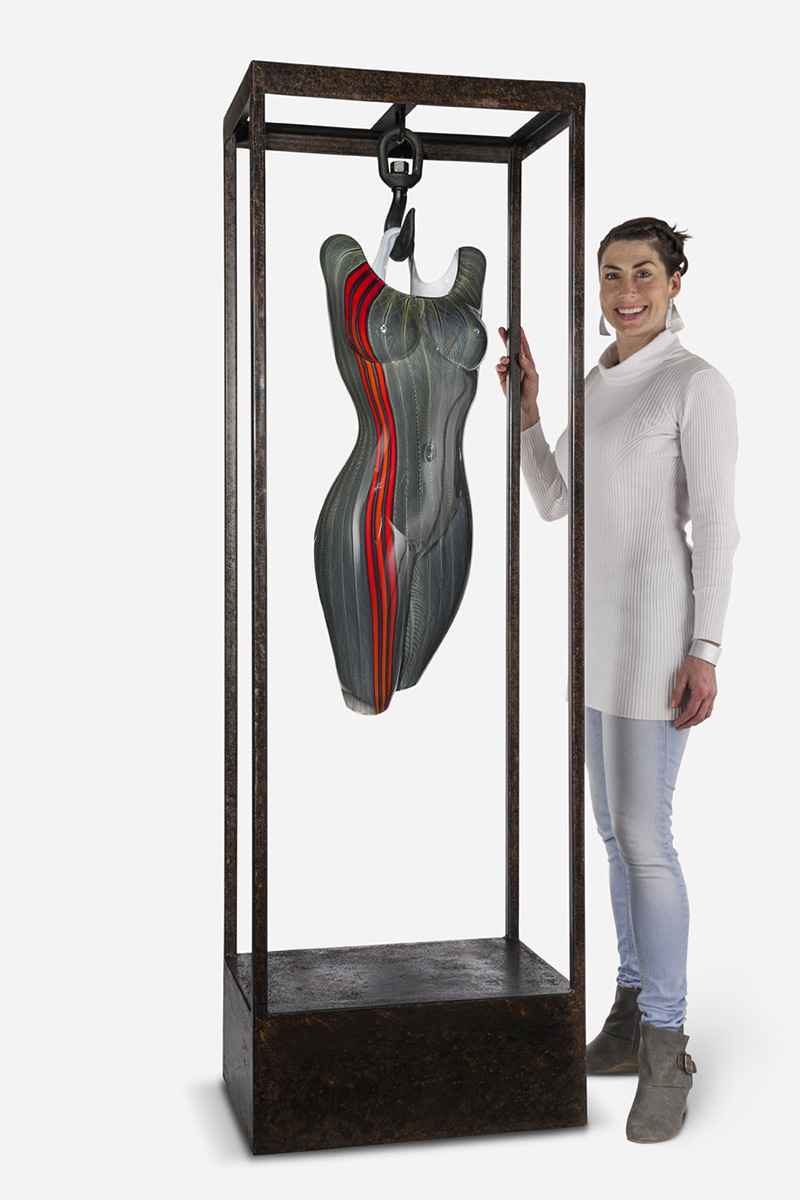Alexis Silk

Biography
Born in Seattle in 1983, she moved to Berkeley California when she was 10 years old. In 2001 she entered the School of the Art Institute of Chicago (SAIC). She quickly identified sculpture as her passion with a focus in foundry. In addition to working at SAIC in cast bronze, she traveled to distant foundries to explore the more extreme process of working in cast iron. In 2004 she spent six months living, studying sculpture, and learning to fire dance in Madrid, Spain; it was an experience that was both exhilarating and profoundly expanding.
After returning from Spain, Alexis discovered glassblowing and took to it like a fish to water. Her introduction was at Ox-Bow Art School in Saugatuck Michigan working with glass artist Jerry Catania. Working independently at Chicago Hot Glass and at Pilchuck Glass School with Boyd Sugiki she developed her glassblowing skills. Meanwhile, at Pilchuck she was exposed to the sculptural work of Pino Signoretto and was instantly inspired by it. It offered a perfect intersection of her passion for working in hot glass, her life-long fascination with the human figure, and her desire for conceptual expression in her work.
After receiving her BFA in 2005, Alexis formed Noga Silk Art Glass with her partner Andrew Noga. In 2006 they moved to the Bay Area, California, and in 2008 moved to Energy, Illinois. In 2009, as their work diverged, Alexis and Andrew split their business and Alexis continued working as simply Alexis Silk. Today she has work in galleries, museums and private collections around the country. She continues to define the frontier of conceptual expression in figurative hot sculpted glass.
Statement
Alexis Silk works in molten glass and metal to create figurative works that are timeless yet thought provoking. A student of human form, she combines close knowledge of anatomy with a passion for fire and an unquenchable thirst for meaning.
Technically, Alexis is pushing the boundaries of what is possible. Her glass figures are sculpted entirely freehand while the glass is hot on the end of blowpipe or punty rod. With work ranging in scale to life size torsos hanging in six-foot tall steel frames, her largest figures are close to half her body weight and take a team of five or six assistants to handle the glass while she sculpts it. For her cast metal pieces she pours the molten bronze or iron.
While making intrinsically beautiful objects, Alexis explores issues of human nature, society, and the relationship of humans, nature and industry. Her hanging figures, for example, are an eloquent exploration of objectification of the body. The glass simultaneously appears like skin and evokes a sense of something superficially applied, like a garment. Cast iron “meat” hooks are a visceral comment on objectification of the body. The color on the interior of the torso being different than the exterior color suggests that if one goes below surface appearance there is more to be discovered. Steel frames represent conceptual boxes of perception that society puts us in.
Since receiving her BFA from the School of the Art Institute of Chicago in 2005, Alexis has continued to study with glass masters such as Pino Signoretto, Richard Royal and Boyd Sugiki. She has been working full time as an artist since 2006.
Technique
All pieces are sculpted freehand while the glass is hot. Smaller scale pieces are typically solid glass, larger scale pieces are blown glass. With the glass on the blowpipe, Alexis uses tools to shape it. Blown glass pieces are shaped from inside as well as outside the piece. She applies color at various stages of the process and with various techniques. Blown pieces typically have complementary colors on interior and exterior. Colored glass powder applied to the exterior adds texture and enhances details on some pieces. She then cold-works pieces to further shape them, creating flat bases and polished edges. For hanging figures, she fabricates steel frames including cutting, grinding, welding, sanding and/or acid bath, and finishing wax. For large scale hanging figures, she fastens glass side panels into the steel frame. Hooks, pulleys, blocks, and chains for hanging figures are found industrial cast iron. Each hanging torso is shaped to the specific hook(s) that will be part of the finished piece.

